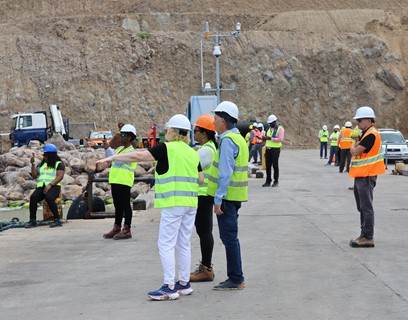
Ideally, at the beginning of a marriage, a man and a woman agrees to form an US unit, without guarantees of what the future might bring.
The intersect, US is a unique relationship, officially recognized by the society as a legal entity. As time passes and the relationship matures, the intersect increases in size and the individual Him and Her portions reduces. The rate of reduction is also unique, dependent on the challenges the US faces and how successfully they are navigated. Essentially, a marriage is a movement from independence to interdependence: _. And the two shall become one_.
Marriage between a Man and a Woman is expected to be the ideal context where children are brought into the world and nurtured. The US intersect is the external womb in which the child is birthed and raised. Whatever the state of the intersect, the state of the marriage, the child comes to recognize this union as his or her comfort zone. Again, in an ideal situation, the child is beginning to form the Me through experience and teachings. To reiterate, regardless of the state of the marriage, whether it be tumultuous or calm and serene, the child sees this as his or her context to develop and become Me. Unlike the couple who is moving from Independence to Interdependence, the child of such a union is striving to become Me and move out of the womb of US: the movement towards Independence.
Clearly the dynamics and the stability of the intersect, US will impact the child. It is expected that the child will learn to adjust to his or her environment because of the dynamic nature if life. But what happens when the relationship between the Mother and Father has disintegrated completely? What happens to the child who is barely near the stage of Independence? Let us look at the issue of divorce from the perspective of the children in the divorce situation.
Hopefully, the decision to divorce was not taken lightly by the adults involved. Ideally, they should have sought external assistance from family, confidant or even professionals in the field of counseling and therapy. If the issues are irreconcilable, then the couple will feel that divorce is the only option. In considering divorce, the welfare of the child has to be taken into consideration. Issue pertaining to living arrangements, schooling, and financial support are usually immediately up for discussion. But can parents ever correctly and adequately anticipate and attend to the psychological, social and emotional needs of the affected child? No two children are alike and their responses to the same scenario are usually quite different. How equipped then are parent to attend to their child's needs while dealing themselves with the disruption of a relationship that both parties, ideally wanted to last forever?
The dissolution of the US can be likened to pre-mature birth, as far as the child is concerned. The ideal period for maturation and independence outside the womb is abruptly interrupted and the child's independence is now in crisis. Unlike the situation within the US, there is immediate help for a pre-term child and doctors and nurses are well schooled and equipped to determine the needs and supply them, though artificially. The child is hopefully brought to stability, depending on the success of the treatment and many even spend several weeks in the hospital, away from the parents who are not equipped at the time to apply medical care, but visit often and give love and care with their presence and attention. There are however situations where the child does not survive the pre-term birth.
When the child involved in divorce is not at the age where he or she can adequately express feelings using language, it is even more difficult for the parents to discern what their child is feeling and how to attend to such responses. Not all parents will be able to afford professional assistance and are sometimes so caught up in their own transformation from interdependence to independence that they too are usually in need of help. Where then are the societal structures that should assist all involved to cope with the significant impact of the dissolution of the unit of society, the family? Who are the professionals who will intervene and help this child to survive when the womb of the US is no longer able to support his or her development in the manner that the child has become accustomed?
What seems to be the pervasive norm is that children are left to deal with the inevitable shortfalls that come with the divorce of their parents. Oftentimes these shortfalls are in the psychological, emotional and social arenas and the child finds less than appropriate ways of expressing and coping with the distress. When divorce occurs in the early years of childhood, chances are, the impact of the event is not evident until the teenage years or even early adulthood. Maybe, like pre-term births, some are afforded immediate care and intervention and though relatively healthy afterward, they may forever endure lasting effects. By some miracle, other children seem to come out of the situation unscathed and go on to live normal lives. But what of the many that die, figuratively speaking? Divorce may have never directly killed a child, but do they ever become the mature and independent Me that they ought to be? Therein lays a whole other story.
I write, not as an expert in the relevant fields. I write as a child of divorce.
Photo Credit To Elev 8
Editor-in-Chief's Note: Tina Mowatt is a freelance contributor to MNI Alive.


